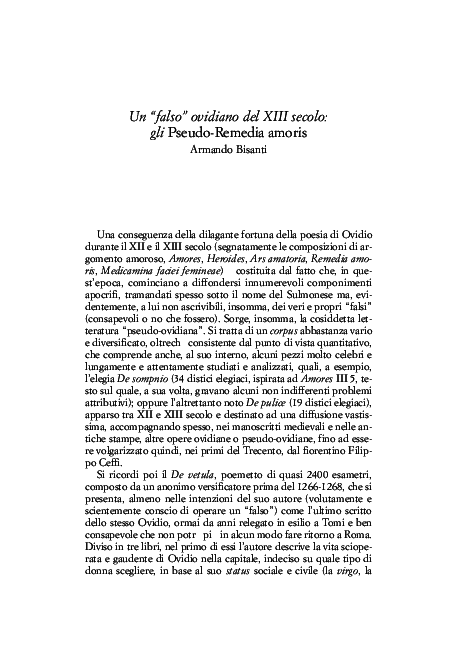

Y had shown that the dates of the manuscripts did not closely correspond with the nature of the texts that they offered. The division into two major branches of transmission (= a bifid stemma), corresponding to earlier and later groups of medieval manuscripts, is a convenient means to organize the tradition, but the reality is quite different.

The arrival of Y served as reminder of something else: the tradition is not bifid, though it has been represented as such. S, in the words of Kenney (1962:8), is “in an intermediate state of depravation”-textual critics frequently impute moral characteristics to manuscripts: the nature of its text shows that it belongs to the α family, but the later date of S (11th cent.) means that its text has ‘degenerated’ and resembles in some particulars the text of β manuscripts. 2.8.7), it does not offer good readings that cannot be found elsewhere. It contains readings thought to be imported from the β branch, and, except for one passage ( Am.

S was, and still is, considered an inferior manuscript. Consequently, P, which was believed to reflect α through the intermediary of R, needed to be used. The perception that P descended directly from R could have eliminated its relevance in the eyes of textual critics, except for the fact that the portion of R (designated (R´)) containing the Amores is almost entirely lost. Making matters simpler still, within the α branch P was thought to be a copy of R. The α branch was particularly straightforward since it consisted of only a few extant manuscripts. This view of the data, current at the time of the first edition of Kenney’s Oxford Classical Text (1961), kept the textual transmission of the Amores relatively simple. (The independence of the β manuscripts is guaranteed by the presence of verses that are absent from α manuscripts.) The dates of the manuscripts seemed to correspond closely with two separate pedigrees: the vetustiores were traced back to a now lost hyparchetype, called α, and the recentiores to a second lost hyparchetype, called β. Kenney (1961), who produced the first modern critical editions of the Amores, regarded these two groups of manuscripts (older and more recent) as representative of two independent lines of transmission. The manuscript witnesses to the Amores fall into two groups: the four earlier manuscripts ( vetustiores) listed above, and an abundance of later manuscripts, referred to collectively as recentiores and dating to the 12th century and after. Y Berlin, Staatsbibliothek, Hamilton 471. By Bart Huelsenbeck, with the assistance of Dan Plekhov


 0 kommentar(er)
0 kommentar(er)
